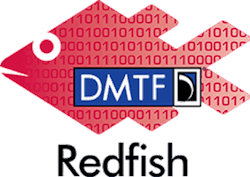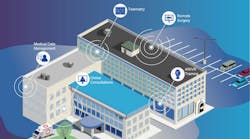In this week’s Voices of the Industry Patrick Quirk, Vice President and GM of Converged Systems for Emerson Network Power, explains how using Redfish specification will improve the simplicity, visibility and control of IT.
Patrick Quirk, VP and GM of Converged Systems for Emerson Network Power
A long-running frustration for data center professionals is the lack of a common language to allow current and future compute and infrastructure to operate in security and harmony. In 2014, when the Distributed Management Task Force (DMTF) officially adopted Redfish as an open industry standard specification for communication, the idea was pretty simple: introduce a new specification that enables heterogeneous data center hardware to work together in a unified manner. Theoretically, Redfish would replace Intelligent Platform Management Interface (IPMI), and deliver a standard for data center and systems management that improves performance, functionality, scalability and security.
This year, theoretical has become a reality. Industry players Emerson Network Power, Lenovo and OSIsoft have presented an end-to-end IT solution in a single cabinet, demonstrating how servers and infrastructure using disparate protocols can communicate through Emerson’s Connectivity Engine. This portable application can be added to Linux-based management solutions using plug-ins and a web services framework that supports the Redfish initiative. While this solution is focused on edge applications, it is clearly scalable for data centers of every size.
The Connectivity Engine is pretty straightforward: Let’s assume your data center requirements have grown along with your business. The chances are pretty good that your hardware isn’t all from the same provider, or it doesn’t use the same communications protocols. Up until now, you may have relied on IPMI to get everything working together. But IPMI is largely outdated, if for no other reason than its inability to handle today’s massive multi-scale environments.
The Connectivity Engine greatly simplifies application development and allows you to support your legacy and third-party devices. This single REST interface combines all of your edge equipment into a concise and easy to understand dashboard, with intelligent alerting that enables your staff to be informed about critical events and trends at any of your locations. It also allows remote access to your equipment across multiple locations, and enables troubleshooting with more capability than ever before.
Most importantly for IT, a Redfish-enabled system delivers:
- Increased security: DMTF Redfish supports TLS encryption through HTTPS to ensure the secure transmission of data between remote facilities and the centralized management system.
- Enhanced availability: Redfish gives you a simple rest API that anyone can use, with the ability to model scale out and cutting edge architecture easily. Speed of discovery is also easier and faster.
- Single API for everything: Since Redfish is an open API, you no longer need a proprietary solution – you can choose the equipment you want to use, and how you want to manage it.
Industry professionals have been waiting for a technology that will enable IT systems to operate in harmony, allowing businesses to be better prepared for growth, big data, and the new challenges that are coming. Redfish and Redfish-enabled technologies are now providing that possibility.
Patrick Quirk is vice president and general manager of Converged Systems for Emerson Network Power. Previous roles include directing strategy for Emerson Network Power’s global embedded firmware operations, and leadership roles for telecommunications and semiconductor technology companies in the US and Europe. Patrick is an alumnus of Auburn University, the University of Alabama in Huntsville, and Vanderbilt University’s Owen Graduate School of Management.





